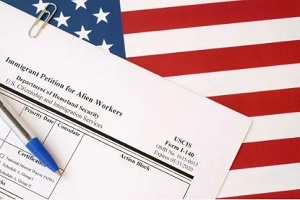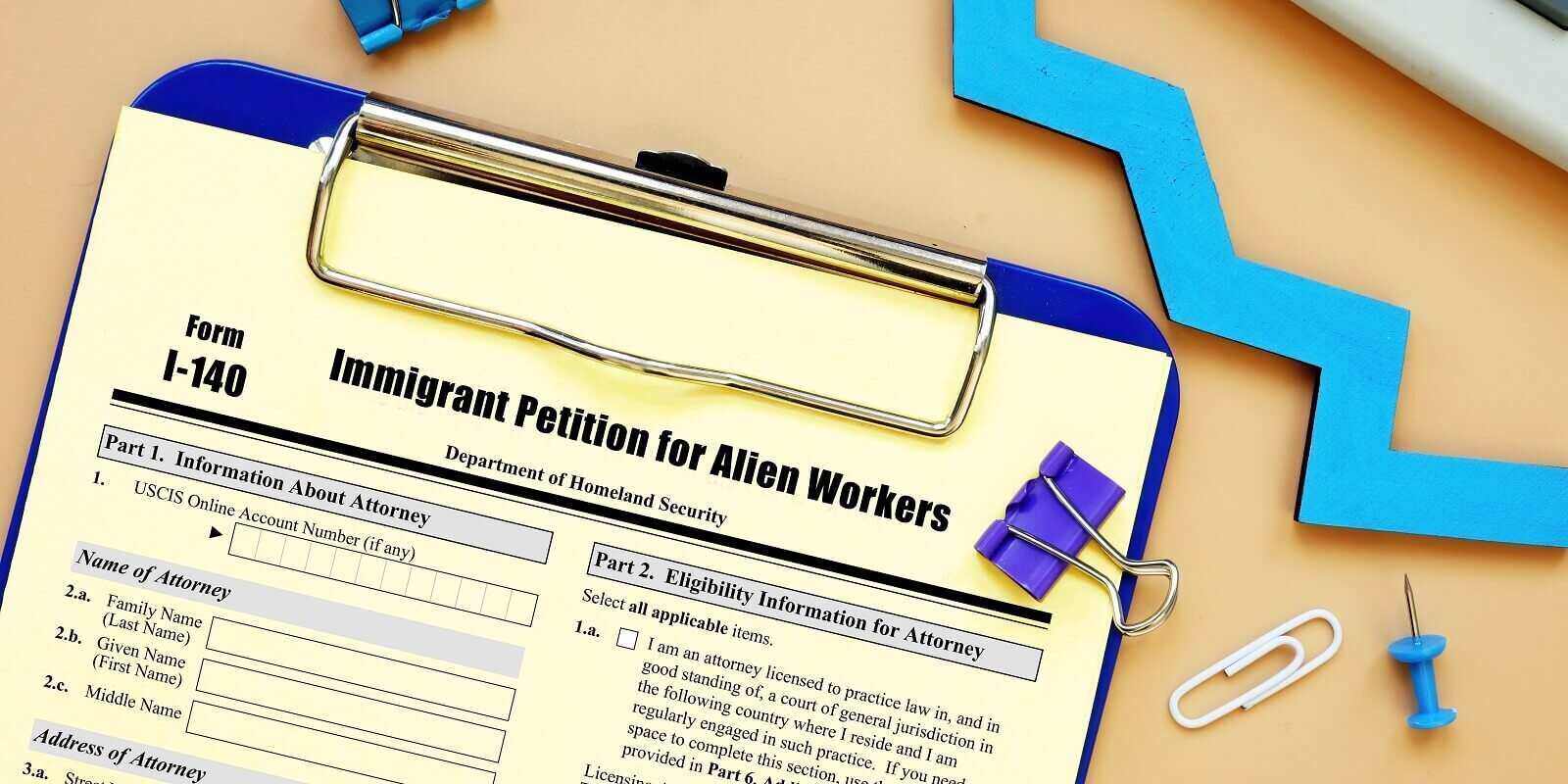Almost all employment-related green card applications are based on Form I-140. It is your employer’s responsibility to submit a Form I-140 petition to U.S. Citizenship and Immigration Services (USCIS) on your behalf if they have agreed to sponsor a work visa for you.
If your objective is to settle down permanently in the U.S., it’s crucial to understand each step in the green card application method. Almost all employment-related green card applications are based on Form I-140. This article explores Form I-140 in detail, explaining what it is, who can submit it, when and how to submit it to USCIS, and other things to keep in mind.
What Is Form I-140 from USCIS?
 Any employment-based green card application process is built upon Form I-140, the Immigrant Petition for Alien Workers. Your I-140 petition will be evaluated by USCIS to determine if you qualify for an immigrant visa. You are unable to submit a green card application without this confirmation.
Any employment-based green card application process is built upon Form I-140, the Immigrant Petition for Alien Workers. Your I-140 petition will be evaluated by USCIS to determine if you qualify for an immigrant visa. You are unable to submit a green card application without this confirmation.
Form I-140 must typically be submitted for you by your employer. The form can only be completed by applicants for the EB1-A or EB-2 visa categories. It’s known as self-petitioning.
Your employer must attest that they are capable of paying you the right wage when they draft your I-140 petition.
On their application for labor certification, the relevant wage is listed. Your company must additionally explain why you are qualified for the position based on your education and professional experience.
An immigrant visa number is going to be made accessible to you once your employer submits the form and USCIS authorizes it. After that, you can make an application for adjustment of status to become a permanent resident.
You’ll require a collection of supporting documentation, such as an employment verification letter, an affidavit of support, a medical examination record, and more in order to change your status. In some circumstances, you’ll have to hold off on changing your status until a visa number becomes available.
For more details on scheduling, consult the Visa Bulletin published by the U.S. Department of State. You should only change your status if you are submitting an application inside the United States. You must obtain a visa from your neighborhood U.S. consulate or embassy if you are applying from overseas.
What Affects the Processing Times for Form I-140?
Your employer will require a few documents before submitting Form I-140. A labor certification document from the U.S. Department of Labor is required for the majority of I-140 petitions. This document often takes many months to obtain. The provision of a labor certification is not required from EB-1A and EB-2 self-petitioners.
Processing times vary depending on your visa category after USCIS accepts your Form I-140 immigrant visa petition. Which service center examines your application will also affect processing. For more details on current processing times, check out the USCIS website.
By submitting Form I-907: Request for Premium Processing Service, the majority of petitioners are able to order premium processing. USCIS will process your application in 15 days if you choose premium processing.
Keep in mind that this is sometimes not available and costs more. This procedure typically takes no longer than three months to complete, but processing times may vary depending on the circumstances.
You will be given an immigrant visa number once USCIS receives your Form I-140. You might be able to submit Form I-485, Application to Register Permanent Residence or Adjust Status, in this situation. For EB-1, EB-2, or EB-3 categories, USCIS enables concurrent submission with Form I-140 and Form I-485.
To submit the Form I-485 application, you won’t require a final ruling on your petition. Instead, you can submit it concurrently with Form I-140. To view Form I-485 processing timelines, go to the USCIS website.
What Takes Place After You File an I-140?
The USCIS will issue a Receipt Notice and give your case a file number after receiving your I-140 petition packet. This is a confirmation of receipt. Your petition will receive an approval notice if the USCIS agrees to it and you can proceed to the following stage of the green card application process now that your I-140 has been approved.
Reach Out To An Expert Fairfax, VA Immigration Attorney
Even though applying for a green card based on a job can be challenging, assistance is available. Contact our team of friendly and helpful professionals at Pride Immigration today. We will guide you throughout the green card application process and assist you in preparing and submitting your application to the U.S. government if you are qualified.
Beeraj Patel, Esq.
Latest posts by Beeraj Patel, Esq. (see all)
- Transitioning to Permanent Residency Through Adjustment of Status for Asylum Seekers - April 14, 2025
- What to Do If Your Employer Withdraws Support During the Green Card Process - March 31, 2025
- How a Green Card Attorney Can Help with Complex Immigration Cases Involving Family Separation - March 17, 2025
